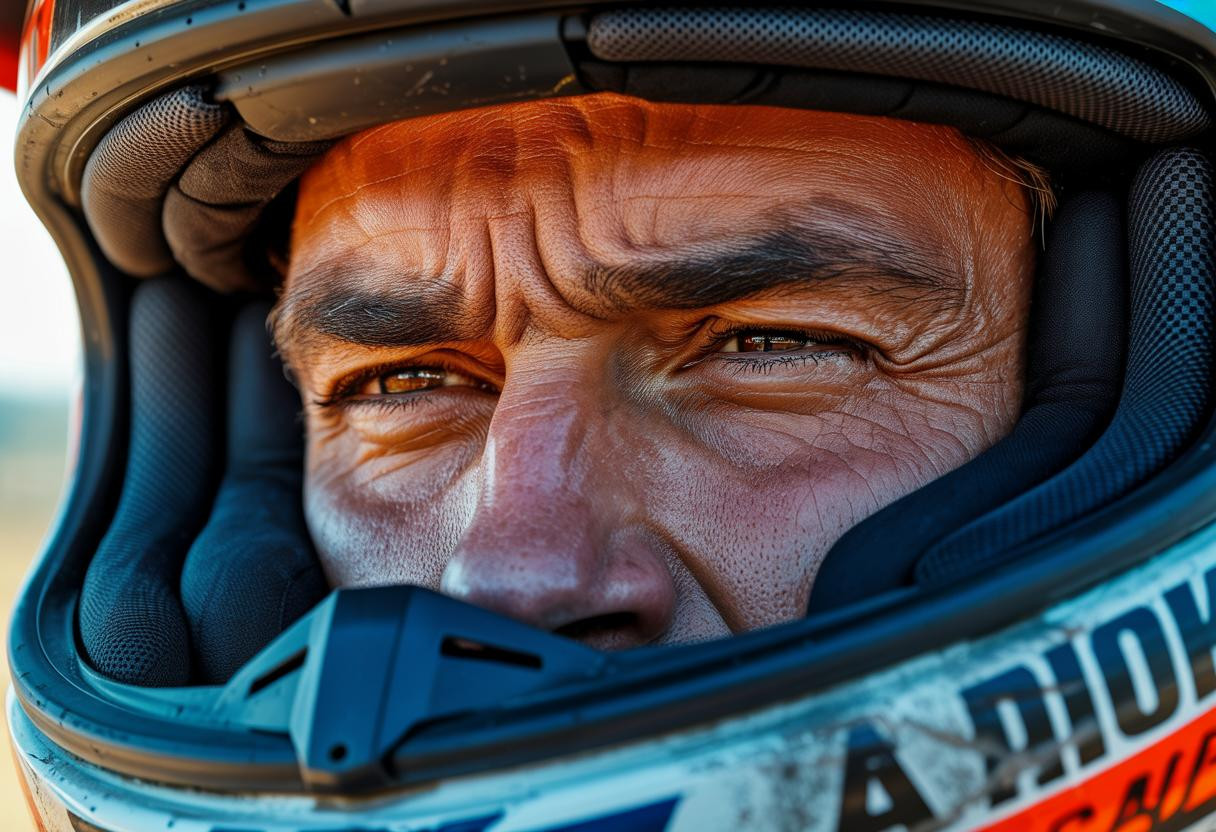When Peter Hickman’s BMW crashed at 140 mph during the 2025 Isle of Man TT qualifying session, the motorsport world witnessed both the devastating power of physics and the remarkable resilience of human spirit. The 14-time TT winner’s feet-first impact at Kerrowmoar corner sent shockwaves through the racing community, but his response reveals something profound about elite athlete psychology and modern safety technology.
The brutal physics behind Hickman’s crash
The crash occurred at Kerrowmoar, a treacherous third-gear left-hand bend where riders exceed 100 mph on bumpy terrain with minimal run-off areas. Hickman’s BMW Superstock machine showed visible signs of mechanical distress before impact, with observers noting smoke and a loose lower fairing component.
At 140 mph, the kinetic energy involved reaches approximately 63,200 joules for the combined bike and rider mass. When that energy transfers instantaneously during impact, the human body experiences forces that would normally prove fatal. Hickman’s feet-first collision with barriers created a proximal-forward force transmission pattern, contributing to his chest, back, shoulder, and facial injuries.
Despite the severity, his survival rate aligns with improving safety statistics. Modern protective equipment – including his SUOMY helmet, Frey Daytona gloves, and Weise Motorcycle Clothing – successfully prevented catastrophic head trauma that would have occurred just decades ago.
Why mechanical failures happen at critical moments
The loose fairing observed before Hickman’s crash highlights a critical vulnerability in current motorcycle design. At extreme speeds, even minor component failures can trigger catastrophic consequences. Fastener durability limitations under high-stress conditions represent a significant gap in current safety protocols.
The psychology that drives riders back to danger
Hickman’s immediate social media response – “battered and bruised, but we’ll be back” – reveals the psychological strategies used by Isle of Man TT racers to process near-death experiences. This compartmentalization technique allows elite athletes to separate traumatic events from their core identity and goals.
Research shows that high-risk athletes develop unique mental frameworks for processing danger. Unlike typical trauma responses, riders like Hickman employ goal-reinvestment strategies that transform setbacks into motivation. This psychological adaptation mirrors patterns seen in elite athletes across dangerous sports.
What’s remarkable is Hickman’s immediate focus on the 2026 TT, demonstrating the mental fortitude that enables riders to face the deadly 37-mile road that has claimed 269 lives since 1907 repeatedly throughout their careers.
Technology gaps that could prevent future crashes
Hickman’s incident exposes critical limitations in current safety systems. The TT currently lacks real-time bike health monitoring that could detect component failures before they cause crashes. Loose fairings, brake system degradation, and suspension issues often develop gradually during qualifying sessions.
Predictive AI could save lives
Machine learning algorithms analyzing rider telemetry data could identify dangerous patterns before crashes occur. By monitoring g-force fluctuations, bike component strain, and rider behavior patterns, predictive systems could alert marshals to potential mechanical failures or rider distress.
Integration with existing digital safety system failures exposed at the 2025 TT could create comprehensive protection networks that respond within seconds rather than minutes.
Hickman’s recovery strategy and competitive future
The chest and back injuries Hickman sustained will require extensive rehabilitation focused on core strength restoration. For TT riders, core stability proves crucial during the demanding 37.7-mile laps that test endurance as much as speed.
His withdrawal shifts Team 8TEN Racing’s focus entirely to Davey Todd, who immediately demonstrated championship potential with a 133 mph qualifying lap. This competitive dynamic change could reshape the entire 2025 season, with Michael Dunlop and Todd now dominating the Superbike and Superstock classes.
What this crash means for motorsport safety
Hickman’s crash represents a pivotal moment for TT safety evolution. The incident demonstrates that while current protective equipment saves lives, preventive technology remains critically underdeveloped. Future safety protocols must focus on predicting and preventing crashes rather than merely protecting riders during impact.
The integration of IoT sensors, AI-driven analysis systems, and real-time component monitoring could transform motorcycle racing safety. Hickman’s survival and positive outlook prove that with proper technology and mental resilience, even the most dangerous crashes can become stepping stones rather than career endings.
